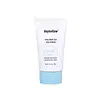What's inside
What's inside
 Key Ingredients
Key Ingredients

 Benefits
Benefits

 Concerns
Concerns

No concerns
 Ingredients Side-by-side
Ingredients Side-by-side

Water
Skin ConditioningEthylhexyl Methoxycinnamate
UV AbsorberDipropylene Glycol
HumectantTitanium Dioxide
Cosmetic ColorantDibutyl Adipate
EmollientC12-15 Alkyl Benzoate
AntimicrobialNiacinamide
SmoothingBis-Ethylhexyloxyphenol Methoxyphenyl Triazine
Skin ConditioningDiethylamino Hydroxybenzoyl Hexyl Benzoate
UV FilterCetearyl Alcohol
EmollientPolysorbate 60
EmulsifyingCetearyl Olivate
1,2-Hexanediol
Skin ConditioningEthylhexyl Triazone
UV AbsorberCetearyl Glucoside
EmulsifyingSorbitan Olivate
EmulsifyingCentella Asiatica Extract
CleansingAloe Barbadensis Leaf Extract
EmollientAllantoin
Skin ConditioningPanthenol
Skin ConditioningSodium Hyaluronate
HumectantHydroxypropyltrimonium Hyaluronate
Sodium Acetylated Hyaluronate
HumectantHydrolyzed Hyaluronic Acid
HumectantSodium Hyaluronate Crosspolymer
HumectantHyaluronic Acid
HumectantPotassium Hyaluronate
Skin ConditioningLactobacillus Ferment
Skin ConditioningPrunus Mume Fruit Extract
HumectantPunica Granatum Fruit Extract
AntioxidantSchisandra Chinensis Fruit Extract
Skin ConditioningLycium Chinense Fruit Extract
AntioxidantMorus Alba Fruit Extract
AntioxidantPhoenix Dactylifera Fruit Extract
EmollientRubus Chingii Fruit Extract
Skin ConditioningMadecassoside
AntioxidantButylene Glycol
HumectantTocopheryl Acetate
AntioxidantHydroxyethyl Acrylate/Sodium Acryloyldimethyl Taurate Copolymer
Emulsion StabilisingSorbitan Isostearate
EmulsifyingAluminum Hydroxide
EmollientStearic Acid
CleansingDimethicone
EmollientDimethicone/Vinyl Dimethicone Crosspolymer
Skin ConditioningLaureth-23
CleansingSodium Polyacrylate
AbsorbentHydrogenated Polydecene
EmollientTrideceth-6
EmulsifyingDecylene Glycol
Skin ConditioningCaprylyl Glycol
EmollientPentylene Glycol
Skin ConditioningEthylhexylglycerin
Skin ConditioningChlorphenesin
AntimicrobialAdenosine
Skin ConditioningMaltodextrin
AbsorbentWater, Ethylhexyl Methoxycinnamate, Dipropylene Glycol, Titanium Dioxide, Dibutyl Adipate, C12-15 Alkyl Benzoate, Niacinamide, Bis-Ethylhexyloxyphenol Methoxyphenyl Triazine, Diethylamino Hydroxybenzoyl Hexyl Benzoate, Cetearyl Alcohol, Polysorbate 60, Cetearyl Olivate, 1,2-Hexanediol, Ethylhexyl Triazone, Cetearyl Glucoside, Sorbitan Olivate, Centella Asiatica Extract, Aloe Barbadensis Leaf Extract, Allantoin, Panthenol, Sodium Hyaluronate, Hydroxypropyltrimonium Hyaluronate, Sodium Acetylated Hyaluronate, Hydrolyzed Hyaluronic Acid, Sodium Hyaluronate Crosspolymer, Hyaluronic Acid, Potassium Hyaluronate, Lactobacillus Ferment, Prunus Mume Fruit Extract, Punica Granatum Fruit Extract, Schisandra Chinensis Fruit Extract, Lycium Chinense Fruit Extract, Morus Alba Fruit Extract, Phoenix Dactylifera Fruit Extract, Rubus Chingii Fruit Extract, Madecassoside, Butylene Glycol, Tocopheryl Acetate, Hydroxyethyl Acrylate/Sodium Acryloyldimethyl Taurate Copolymer, Sorbitan Isostearate, Aluminum Hydroxide, Stearic Acid, Dimethicone, Dimethicone/Vinyl Dimethicone Crosspolymer, Laureth-23, Sodium Polyacrylate, Hydrogenated Polydecene, Trideceth-6, Decylene Glycol, Caprylyl Glycol, Pentylene Glycol, Ethylhexylglycerin, Chlorphenesin, Adenosine, Maltodextrin
 Reviews
Reviews

Ingredients Explained
These ingredients are found in both products.
Ingredients higher up in an ingredient list are typically present in a larger amount.
1,2-Hexanediol is a synthetic liquid and another multi-functional powerhouse.
It is a:
- Humectant, drawing moisture into the skin
- Emollient, helping to soften skin
- Solvent, dispersing and stabilizing formulas
- Preservative booster, enhancing the antimicrobial activity of other preservatives
Allantoin is a soothing ingredient known for its protective and moisturizingg properties. Because of this, it is often added to products with strong active ingredients.
Studies show higher concentrations of this ingredient can promote wound healing.
Though it can be derived from the comfrey plant, allantoin is produced synthetically for cosmetic products to ensure purity.
Learn more about AllantoinButylene Glycol (or BG) is used within cosmetic products for a few different reasons:
Overall, Butylene Glycol is a safe and well-rounded ingredient that works well with other ingredients.
Though this ingredient works well with most skin types, some people with sensitive skin may experience a reaction such as allergic rashes, closed comedones, or itchiness.
Learn more about Butylene GlycolPanthenol is a common ingredient that helps hydrate and soothe the skin. It is found naturally in our skin and hair.
There are two forms of panthenol: D and L.
D-panthenol is also known as dexpanthenol. Most cosmetics use dexpanthenol or a mixture of D and L-panthenol.
Panthenol is famous due to its ability to go deeper into the skin's layers. Using this ingredient has numerous pros (and no cons):
Like hyaluronic acid, panthenol is a humectant. Humectants are able to bind and hold large amounts of water to keep skin hydrated.
This ingredient works well for wound healing. It works by increasing tissue in the wound and helps close open wounds.
Once oxidized, panthenol converts to pantothenic acid. Panthothenic acid is found in all living cells.
This ingredient is also referred to as pro-vitamin B5.
Learn more about PanthenolSodium Hyaluronate is hyaluronic acid's salt form. It is commonly derived from the sodium salt of hyaluronic acid.
Like hyaluronic acid, it is great at holding water and acts as a humectant. This makes it a great skin hydrating ingredient.
Sodium Hyaluronate is naturally occurring in our bodies and is mostly found in eye fluid and joints.
These are some other common types of Hyaluronic Acid:
Learn more about Sodium HyaluronateSodium Polyacrylate is the sodium salt of polyacrylic acid. It is used as an absorber, emollient, and stabilizer.
This ingredient is a super-absorbent polymer - meaning it can absorb 100 to 1000 times its mass in water. As an emollient, Sodium Polyacrylate helps soften and soothe skin. Emollients work by creating a barrier to trap moisture in. This helps keep your skin hydrated.